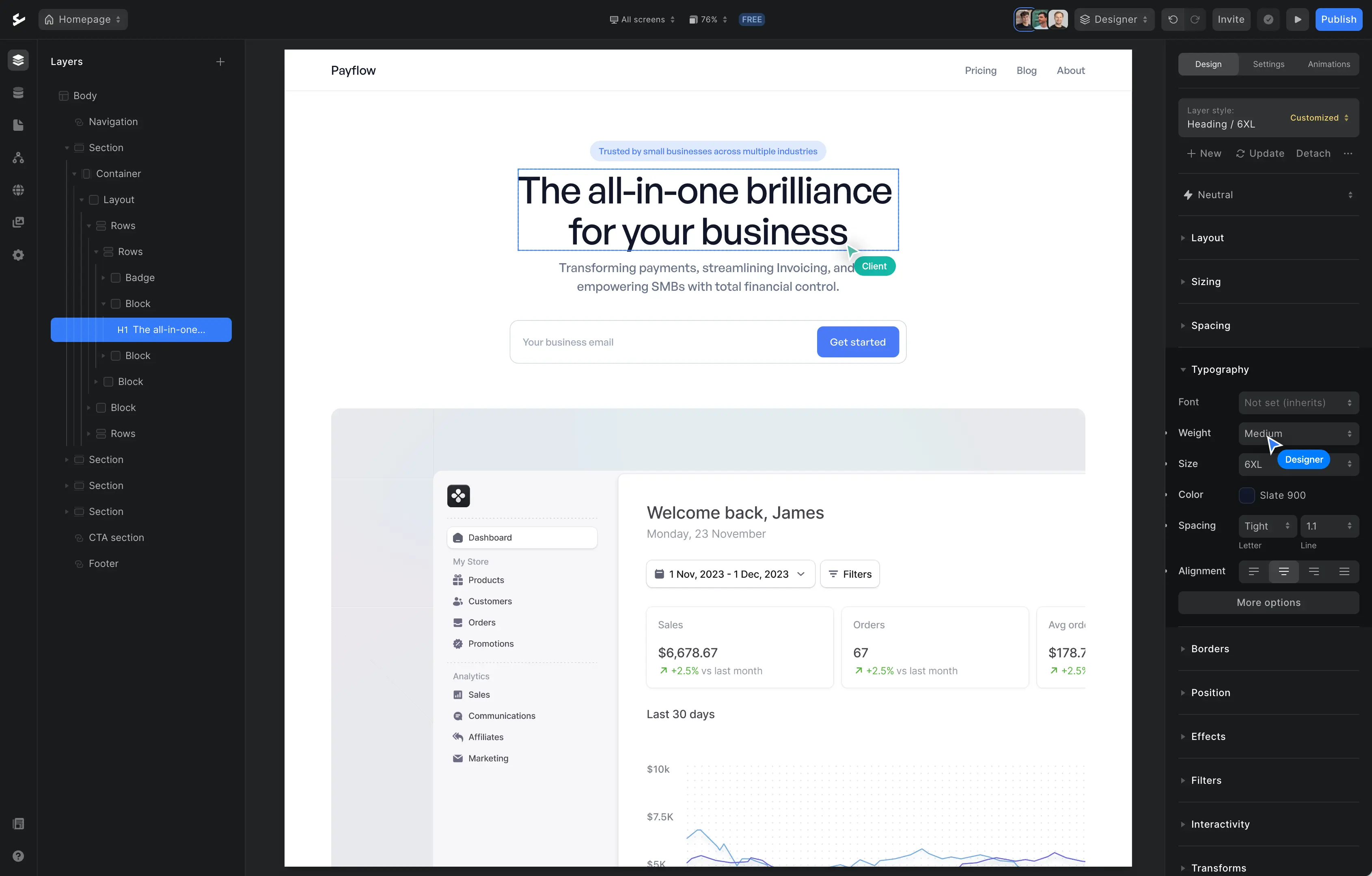
We already teased you in this blog that an improved Ycode Beta environment would be coming.
Today is that day! Welcome to Ycode Beta 2.0 🚀
We rethought Ycode’s infrastructure and removed previous limitations. With Beta 2.0, we can deliver more advanced features and allow for quicker and more reliable development. With automatic updates, your apps will always be up-to-date—no action is required from your side.
And another great thing: Every project you build with Ycode is there to stay, forever. As our development team continues to improve our no-code tool, your projects will remain available and fully functional. We encourage you to publicly publish your Ycode projects!
Now, hurry to your dashboard because Ycode Beta 2.0 is waiting for you!
➜ Log in to your Ycode dashboard
What it feels like to build with the improved Ycode
You log into Ycode and enter a clean dashboard. Excited to start building, you click on the “New project” button. You take a sip of your coffee, but even before you can put your mug down, your new project is already created. It’s nearly instant!
This is just a first glimpse of the robust infrastructure you’re building on. You open the canvas and start adding elements. You realize that your building experience feels much faster, more responsive, and overall smoother than previously.
You open the database section and see a much simpler UI. It's easier to work with data and fields, as everything can be edited at the same time in one view.

Back in the canvas, you use custom colors to design and style different elements. You select exactly the right hues and create web pages that match a brand's color palette.
Once you’re ready with building your web project, you save and publish it. Just like creating your project, publishing the final version is also done within seconds.
Creating in the improved Ycode Beta environment feels easy and intuitive!
Note: Don't forget that we're still in Beta. If you find a bug or see something that can be improved, please write us here.
What to expect from Ycode in the next months
Our development team is not sitting still. During the next few months, they’ll work on a couple of exciting features.
Get your team on board
With agencies and teams in mind, we’ll work on features that are specifically aimed at teams. For starters: Team accounts. In these accounts, team leads can invite people to their team and manage their roles—customizing permissions and access rights for individual members.
Collaborate on projects
With the collaboration feature, multiple people will be able to work on a project together. This feature will include real-time editing, making it possible for several people to make edits simultaneously.
In order to make this collaboration process smooth, we’ll develop an annotation feature for in-app communication. This allows builders to share feedback by leaving notes, adding tasks, and writing comments inside a project. Everyone in the team can post, answer, edit, delete, and resolve comments.
To keep track of changes and if needed, reverse them, we’ll also add project backups and versions to Ycode. By opening a history view, you’ll be able to see exactly which user made which changes and restore older versions.

Work with pre-built components
To help you build faster and with more ease, we’re also planning to add pre-built components to the Ycode library. You can drop these components directly into your project and customize them as desired.
Flexibly design with custom spacing
In Ycode Beta, custom spacing was available but you were limited to the spacing options we offered as design properties. Many of you asked for more flexibility, which is why we're working on offering custom spacing. You get to use your own spacing, using units such as px, rem, and em. Expect this feature to launch in the very near future!
Build dedicated workflows
Last not but least, we’ll improve the workflow structure within Ycode. Workflows are event triggers that set action(s) in motion. When a user interacts with your app, an event is triggered and a series of actions can be performed.
A common workflow is a newsletter signup. Someone adds their email to a signup form (interaction), clicks the signup button (event), gets added to the email list, and receives a welcome email (actions).
In your canvas, you’ll be able to right-click any element to create new workflows. This takes you to to a dedicated workflow section, in which you can build entire workflows.
An example of workflow events could be:
When: An element is clicked
Step 1: Sign up the user
Step 2: Create new records in the database
Step 3: Go to the signed-in user dashboard page
Another example can be seen below.

Time to start doing!
We can talk a lot more about the technical aspects of Ycode Beta 2.0, but it’s best that you just feel the difference. So on that note, this is our cue to stop talking and let you do the building! Have fun. 😊
Get your project started today
Discover our intuitive visual editor, use built-in CMS collections, SEO features and launch your web projects with ease.

